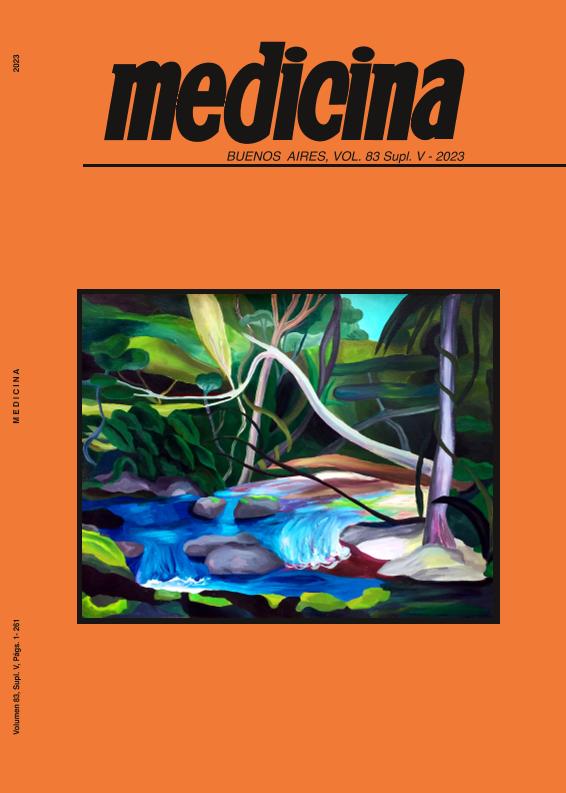Evento
Dentrimental effects of lindane on the bovine oviductal epitelial cells
de Boeck, Maximiliano ; Angel Spiees, Ignacio Abel; Roldan Olarte, Mariela; Vella, Milda Alejandra
; Angel Spiees, Ignacio Abel; Roldan Olarte, Mariela; Vella, Milda Alejandra ; Cuozzo, Sergio Antonio
; Cuozzo, Sergio Antonio ; Valdecantos, Pablo Alberto
; Valdecantos, Pablo Alberto
 ; Angel Spiees, Ignacio Abel; Roldan Olarte, Mariela; Vella, Milda Alejandra
; Angel Spiees, Ignacio Abel; Roldan Olarte, Mariela; Vella, Milda Alejandra ; Cuozzo, Sergio Antonio
; Cuozzo, Sergio Antonio ; Valdecantos, Pablo Alberto
; Valdecantos, Pablo Alberto
Tipo del evento:
Reunión
Nombre del evento:
Reunión anual de la Sociedad Argentina de Investigación Clínica; XXV Jornadas anuales de la Sociedad Argentina de Biología; LV Reunión anual de la Asociación Argentina de Farmacología Experimental; VIII Reunión científica regional de la Asociación Argentina de Ciencia y Tecnología de Animales de Laboratorio
Fecha del evento:
15/11/2023
Institución Organizadora:
Sociedad Argentina de Investigación Clínica;
Sociedad Argentina de Biología;
Asociación Argentina de Farmacología Experimental;
Asociación Argentina de Ciencia y Tecnología de Animales de Laboratorio;
Título de la revista:
Medicina (Buenos Aires)
Editorial:
Fundación Revista Medicina
ISSN:
0025-7680
Idioma:
Inglés
Clasificación temática:
Resumen
Lindane, the γ-isomer of the hexachlorocyclohexane, was a widely used organochlorine pesticide in agriculture and public health. Due to its high environmental persistence, bioaccumulation, and toxicity, in the present work we investigate its effects on primary cultures of the bovine oviductal epithelial cells (BOEC), focusing on cell viability, proliferation, migration, and genotoxicity. Different lindane concentrations (12.5 μM, 25 μM, 50 μM, 100 μM and 200 μM) were tested on 80% confluent BOEC monolayers in DMEM 5% FSB at 38.5°C, 5% CO2 and 100% humidity. Then cell viability was evaluated by the trypan blue exclusion test. Cell viability was above 86% at all the lindane concentrations assayed. However, concentrations starting from 25 µM exhibited a significant decrease in cell number/mL compared to the control (p<0.05). We selected 50 μM to evaluate the lindane effect on the proliferative capacity of BOEC by a clonogenic assay. Cells at low density (500 cells/60 mm plates) were seeded and incubated overnight for cell attachment. The medium was then replaced with or without lindane (control) and cultured for 7-10 days. Colonies were then stained with Giemsa and scored; a substantial reduction in the colony formation was observed (p<0.05). Cell migration was evaluated by the wound healing assay; scratches were made in confluent BOEC cultures and incubated at 3 h, 6 h, and 12 h in DMEM 5% FBS with or without lindane (50 μM). Cells in the presence of lindane displayed a tendency to delay cell migration. Lindane’s genotoxicity was evaluated by a micronucleus assay after 48 h of exposure to 50 μM of lindane. Cells fixed in 4% formaldehyde and stained with Hoëchst 33342 exhibited a 2,4-fold increase in micronucleus formation. Results suggest that lindane have detrimental effects on the oviductal epithelium altering essential cellular processes that potentially impair female fertility.
Palabras clave:
LINDANO
,
CELULAS EPITELIALES
,
OVIDUCTOS BOVINO
,
PLAGUICIDA
Archivos asociados
Licencia
Identificadores
Colecciones
Eventos(PROIMI)
Eventos de PLANTA PILOTO DE PROC.IND.MICROBIOLOGICOS (I)
Eventos de PLANTA PILOTO DE PROC.IND.MICROBIOLOGICOS (I)
Citación
Dentrimental effects of lindane on the bovine oviductal epitelial cells; Reunión anual de la Sociedad Argentina de Investigación Clínica; XXV Jornadas anuales de la Sociedad Argentina de Biología; LV Reunión anual de la Asociación Argentina de Farmacología Experimental; VIII Reunión científica regional de la Asociación Argentina de Ciencia y Tecnología de Animales de Laboratorio; Mar del Plata; Argentina; 2023; 235-235
Compartir



